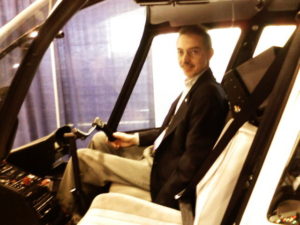More than 100 NAB Show sessions and more than 50 exhibitors will feature Next Gen TV technology that is now voluntarily spreading to cities throughout the country. Powered by the ATSC 3.0 next-generation broadcast standard, Next Gen TV promises to deliver sharper, more detailed pictures and lifelike multichannel audio with upgraded broadcasts that will be transmitted and received in the same Internet Protocol language as Internet-delivered content.
Jointly sponsored by the Advanced Television Systems Committee, the Consumer Technology Association and NAB, the “Ride the Road to ATSC 3.0” exhibit will be featuring a series of free presentations about all facets of the ATSC 3.0 standard. And attendees can pick up a free Guide to 3.0 at the Show in the Central Lobby of the Las Vegas Convention Center during the show.
Single Frequency Network Demonstrations
The NAB, with support from a number of technology companies, will demonstrate the Single Frequency Network (SFN) capabilities of the Next-Gen TV standard, showing how reception can be improved in difficult locations and in moving vehicles by deploying multiple broadcast towers transmitting the broadcast signal on the same channel.
Using several local transmissions, special SFN viewing kiosks will showcase the flexibility of the ATSC 3.0 standard. Dozens of sessions planned in the exhibit will include updates on the Dallas, Phoenix, Santa Barbara, East Lansing, Cleveland, and Korea ATSC 3.0 deployments.
Scores of papers and sessions will be presented about Next-Gen TV during the 2019 NAB Show, with session topics that will cover consumer research, consumer device plans, conformance testing, audio enhancements, station build-out advice, watermarking, advanced emergency information, channel security, advanced advertising and interactivity. In addition to ATSC, CTA and NAB, exhibit sponsors include Pearl TV, Sinclair Broadcast Group, LG Electronics, Dolby, Sony, Samsung and the AWARN Alliance. The centerpiece of the Ride the Road stage is a giant new LED videowall optimized for broadcast applications, provided by LG Business Solutions.
AGC Systems president Aldo Cugnini will be at the show, and available for discussions regarding support for ATSC and other related ventures. If you’d like to meet up, please contact us.
 AGC Systems’ Aldo Cugnini has been featured in the ATSC website and Newsletter as “Someone You Should Know.”
AGC Systems’ Aldo Cugnini has been featured in the ATSC website and Newsletter as “Someone You Should Know.”